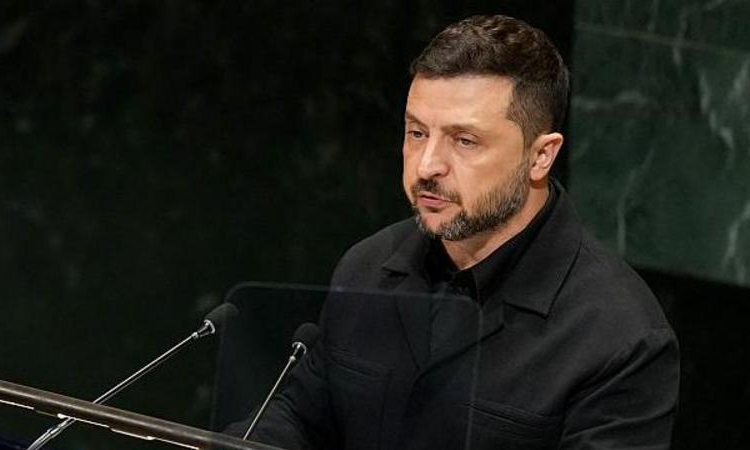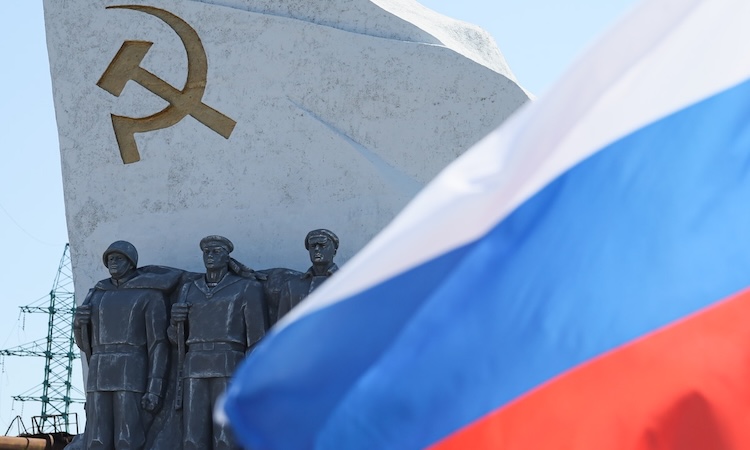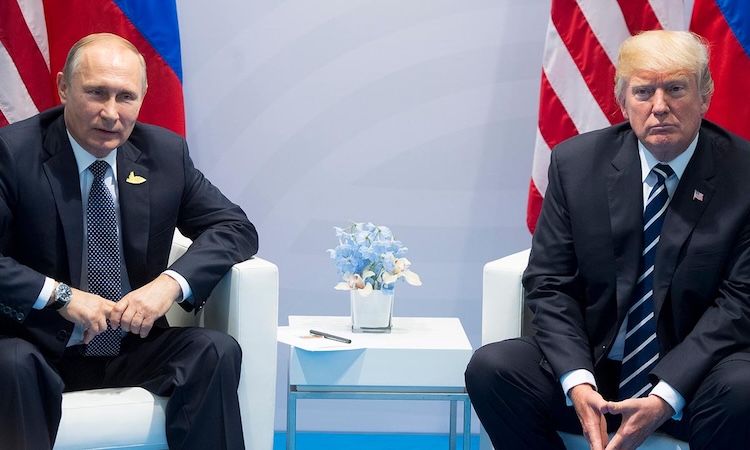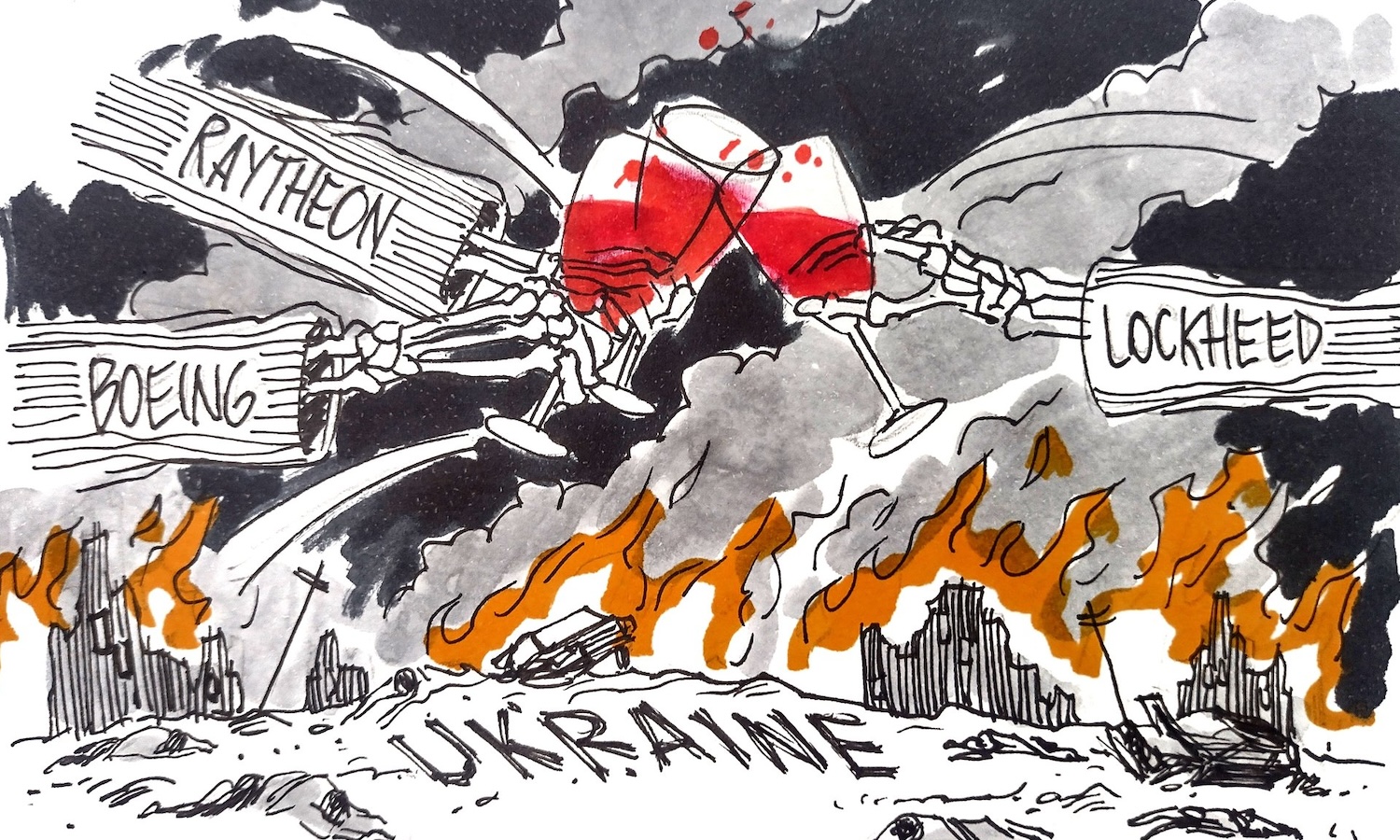The following article is written by CPGB-ML member and RT reporter Steve Sweeney, currently reporting on elections in Donbass.
*****
Soon after war-hungry US secretary of state Antony Blinken arrived on a surprise visit to Ukraine earlier this week, the ink dried on Washington’s latest military aid package.
Included in the bumper $1bn deal are the armour-piercing depleted uranium shells whose use Russia has described as inhumane and “a criminal act” due to their long-term impact on people and the environment.
The 120mm rounds will be used to arm the 31 M1A1 Abrams tanks that the USA plans to deliver later this year, after promising them last year under pressure from European allies.
Washington’s assurances that Ukraine will use the depleted uranium shells “responsibly” are unlikely to be met, given that Kiev’s forces have repeatedly fired banned cluster munitions and petal mines into civilian areas of Donbass.
When Britain announced it was sending depleted uranium as part of the Challenger 2 tank package in March, Russia responded by deploying nuclear missiles in neighbouring Belarus. Moscow warned at the time that the use of depleted uranium on the battlefield would be considered a “dirty bomb” and elicit a tough response.
The resort to depleted uranium is not only controversial but also a sign of desperation. It is no surprise to see the USA finally agreeing to send the shells to its proxies in Ukraine as their much-vaunted ‘counteroffensive’ flounders.
The decision to send DU rounds comes soon after the equally controversial decision to supply cluster munitions. This, while provoking criticism from a number of Nato allies, was actually a tacit admission that the USA is running out of regular ammunition.
Covering up the truth about depleted uranium
Previously unheard of beyond locals and the diaspora, the Iraqi town of Fallujah has become synonymous with the deadly effects of depleted uranium, which was used on the civilian population there during the US-led invasion and subsequent occupation of Iraq.
Some 20 years later and locals are still suffering the consequences with a rise in cancer rates, miscarriages and birth defects.
But there has been a concerted effort at a cover-up, despite – or perhaps because – a 2010 study showed results of sickness from exposure that were worse than for survivors of the Hiroshima and Nagasaki atomic bombs.
The results of the study Cancer, Infant Mortality and Birth Sex-Ratio in Fallujah, Iraq 2005-2009 were shocking. It found that infant mortality rates had shot up to 80 per 1,000 births as compared with 19 in Egypt, 17 in Jordan and 9.7 in Kuwait.
The types of cancer – including a 38-fold increase in leukaemia and a ten-fold increase in female breast cancer – were “similar to that in the Hiroshima survivors who were exposed to ionising radiation from the bomb and uranium from the fallout”.
I spoke to survivors of the 2004 attack in March this year and they told me that even now babies are being born with twisted or missing limbs. One woman said she had had two miscarriages and the two of her surviving children I met were both born with deformities.
Medics confirmed that there was indeed a causal link between the rise in cancers and birth abnormalities and depleted uranium, but they were reluctant to come on record, saying they faced pressure against speaking out from the USA.
Nato, too, has used the deadly munition. The military alliance admitted to dropping at least 31,000 uranium missiles (10 tons) during the bombing of Yugoslavia in 1999. More than 300 Italian soldiers died from exposure to the material.
Serbia became the cancer capital of Europe after the attack, with thousands of civilians affected, and the water, soil and natural environment poisoned by the toxic munition.
According to the President of the Serbian Society for the Fight against Cancer, oncologist Slobodan Cikaric, depleted uranium has a half-life of 4.5 billion years and continues to cause cancer years after the Nato bombing.
Nuclear war is already being fought by the west
Experts say that depleted uranium poses a major global threat. One academic study described it as “the Trojan horse of nuclear war”, with one paragraph of its report saying:
“The use of depleted uranium weaponry, defying all international treaties, will slowly annihilate all species on earth including the human species, and yet the United States continues to do so with full knowledge of its destructive potential.” (Depleted Uranium: the Trojan horse of nuclear war by Leuren Moret, World Affairs, April 2004)
Radioactive contamination of soil is already underway in Ukraine, with a substantial surge reported in the Khmelnitsky region in May. The rise from 80 nanosieverts to 140-160 nanosieverts is likely a result of the explosion of depleted uranium munitions in a storage factory.
And of course, while the USA and Britain supply this horrendously toxic munition, it will be Ukrainians who suffer the long-term effects when it is used on their land.
It is perhaps unsurprising that Washington, along with France and Britain, have led opposition not only to calls for a ban on the use of depleted uranium on the battlefield, but even to the demand for a moratorium that would allow for research on the long-term impact of its use.
Despite all the evidence, the USA denies a causal link to cancers and birth defects, while Britain has laughably claimed that the shells from depleted uranium do not have higher levels of radioactivity than that of household appliances.
To admit otherwise would leave them open to war crimes charges. But the World Health Organisation (WHO) has raised its concerns over depleted uranium. In a paper, it said that “someone who inhales small, insoluble uranium particles may experience lung damage or lung cancer due to radiation. Depleted uranium may also lead to poor kidney functioning.”
A number of medical experts claim the WHO has been pressured into suppressing evidence into the effects of depleted uranium, adding fuel to claims of a cover-up. There has certainly been a reluctance to carry out any serious research, something the Campaign for Nuclear Disarmament (CND) has called on the British government to fund instead of sending depleted uranium to Ukraine.
But neither Britain nor Washington have any scruples, it seems, as they resort to increasingly desperate measures in their proxy war against Russia.
Drone strikes on civilian areas in Moscow and other parts of Russian territory are hardly likely to affect a population that endured the sieges of Leningrad and Stalingrad. Likewise, the people of Donbass have shown incredible resilience despite being bombed on a daily basis by Ukrainian forces for the past nine years.
Cluster munitions and other war crimes
In a bid to break their will, the United States agreed to send cluster bombs for Ukraine to use against the civilian population. The move proved controversial, with some of the 120 countries that have signed an international treaty banning cluster munitions raising concerns.
United Nations spokesman Stefan Dujarric heard reports that Kiev had targeted civilian areas with the banned bombs soon after the US announcement, saying they “should be consigned to the dustbin of history and should not be used”.
The following day, cluster munitions claimed their first victim since Washington’s announcement: Rostislav Zhuravlev, a communist journalist working for RIA Novosti in the Zaporozhye region. The reporter was travelling with a group of journalists who had been investigating the use of cluster munitions when their car came under fire from Ukrainian forces.
The killing was immediately denounced as a war crime by Russia, which held Washington responsible for what it described as “a heinous and premeditated crime”.
But the National Union of Journalists of Ukraine (NUJU) hit out at statements from the International Federation of Journalists and Unesco calling for an international probe. Instead it celebrated Zhuravlev’s death as marking “the demise of a Russian propagandist in the service of the Kremlin”.
This is all the more chilling as a journalist working in Donbass. Under the Geneva convention, media workers have civilian status and to deliberately target them is internationally recognised as a war crime. But Ukraine, Britain, the USA and their allies care very little for international treaties, not only ignoring but actively facilitating the war crimes carried out on the people of Donbass – including the use of cluster munitions.
Ukraine forces began using cluster bombs on the people of Donetsk soon after fighting broke out in 2014. As battle continues, the Cluster Munitions Coalition says people are being killed and wounded by cluster bombs at a higher rate than anywhere else in the world. According to their research, 2022 was the deadliest year on record globally.
Since the US announcement, however, cluster bombs are being used far more frequently. I heard five rounds of cluster munitions in the space of ten minutes while writing this article in Donetsk.
But these weapons are not being used against military targets; they are being fired at civilians – at their homes, their shopping centres and their workplaces. Even a simple task such as collecting groceries has become a dangerous activity for the people of Donetsk.
In early August, the Donetsk University of Economics and Trade was destroyed by cluster munitions, while residential areas were also struck.
I spoke to eyewitnesses on the scene while the building was burning who said they knew immediately that the deadly bombs had been used, with the sound of explosions close together. One family said their son was screaming and they tried to shelter in the hallway, with no basement to hide in for safety.
A day later, I returned to the scene and found that the roof had caved in, while the floor of the university was flooded under inches of water. Exhausted firefighters were on the ground, having collapsed after spending the whole night tackling the blaze.
Cluster munitions are designed for maximum impact. They open up in mid-air and spread scores or hundreds of submunitions over a wide area, killing or seriously wounding most in the impact zone. But not all of them explode on impact, and they can lay dormant for years.
These unexploded bombs are often found by children, who mistake them for toys. Washington used the munition to deadly effect during the Vietnam war, leaving tens of millions of unexploded bomblets.
People in Laos are still being killed as a result of the bombs dropped on their country decades ago ¬– and this is now the reality facing the people of Donbass.
Petal mines threaten children in particular
But it is not only depleted uranium and cluster munitions that the population of Donetsk need to worry about, since Ukraine has also been firing the banned Lepostok ‘petal mines’ into civilian areas for some time now.
Last month, an 80-year-old woman became the latest victim of these innocuous-looking explosives after scores of them were fired into a civilian area in the Kuibyshevsky district of Donetsk city. According to local officials, more than 120 civilians have been wounded as a result of petal mines, 11 of them children, with three succumbing to their injuries.
The petal mine – also known as the PFM-1 – is a Soviet-era small plastic blast mine that was banned under the Ottawa convention, which became an internationally binding law on 1 March 1999. Their use is also considered a war crime under the Geneva convention.
It is similar to the BLU-43 that was used by the United States in Laos during the Vietnam war, with military officials suggesting the PMF-1 was developed after reverse-engineering by the Soviet Union.
Most states destroyed their stockpiles after ratifying the Ottawa convention. However, Ukraine asked for numerous extensions to the deadline. In 2020, Ukraine refused to destroy any more of its deadly arsenal, and in 2021, its stockpile was reported to be more than 3.3 million mines.
Petal mines fall silently and can be dispersed over a wide area. Their green colour and small size make them difficult to see, and their shape resembles a toy, making children particularly vulnerable.
Signs are posted in Donetsk supermarkets warning people to take care, with a cigarette lighter posted next to a photograph of a mine for scale. But despite demining efforts, hundreds are believed to be scattered across the city, and locals are constantly reminded to remain vigilant and to avoid walking on grass as much as possible.
In recent weeks, authorities released an interactive map to help local residents identify areas where petal mines are believed to have been fired in order to take extra care.
Standing with Ukraine?
Meanwhile, news comes to us of the pro-war resolution proposed by the GMB to the forthcoming TUC congress in Britain. Topping this self-declared ‘solidarity’ resolution’s list of demands are:
“1. the immediate withdrawal of Russian forces from all Ukrainian territories occupied since 2014 [ie, from Crimea, Donetsk, Lugansk, Zaporozhye and Kherson, all of which have voted to rejoin Russia, and some of which have fought and sacrificed much to reject the imposition of the fascist rule by the Kiev junta];
“2. the continuation and increasing of moral, material, and military aid from the UK to Ukraine.” (Our emphasis)
The people of Donbass deserve better than this despicable pro-imperialist resolution cooked up by the so-called Ukraine Solidarity Campaign, which is in reality no more than a front for the toxic Trotskyite agents of the Alliance for Workers Liberty (AWL).
This warmongering motion is one of the most dangerous and reactionary to be debated at a TUC conference for decades. It would effectively see trade unionists calling for the killing of their brothers and sisters and urging British and American imperialists to keep sending weapons to be used against workers and civilians.
We encourage our readers to read the full text of this warmongering resolution, which tries to camouflage its true import by throwing in inapplicable references to the Spanish civil war, to workers’ rights and to peace. But we must not be fooled by such weasel words and attempts to turn reality on its head.
The AWL and its friends in the trade union movement are deceiving workers and trade unionists, they are amplifying western media lies about Russia and Belarus and masking the truth in the service of imperialism – as they always do.
Workers and trade unionists in Donbass do not support this motion, and they are stunned that their counterparts in Britain could be lining up to back their killers.
The ‘solidarity’ of fools is no solidarity at all.
Stand with the people of Donbass and oppose this motion.
______________________________
For more information on the cover-up surrounding the explosion at a warehouse full of DU munitions in west Ukraine earlier this year, see Ukraine’s depleted uranium blast: Europe on brink of ‘environmental disaster’ by Dr Chris Busby, Sputnik International, 19 May 2023.
















